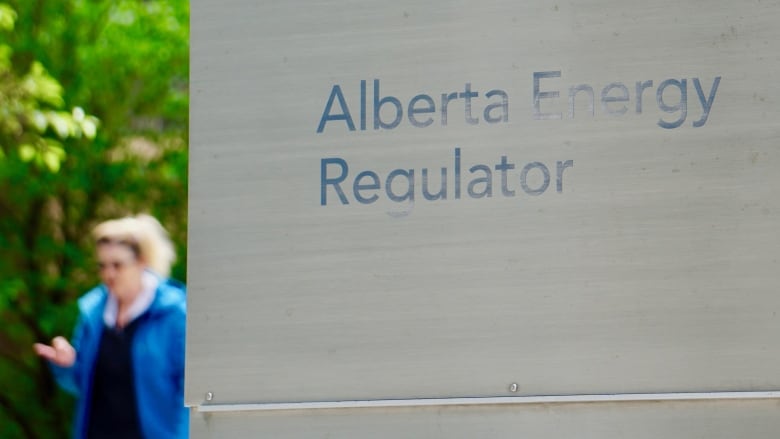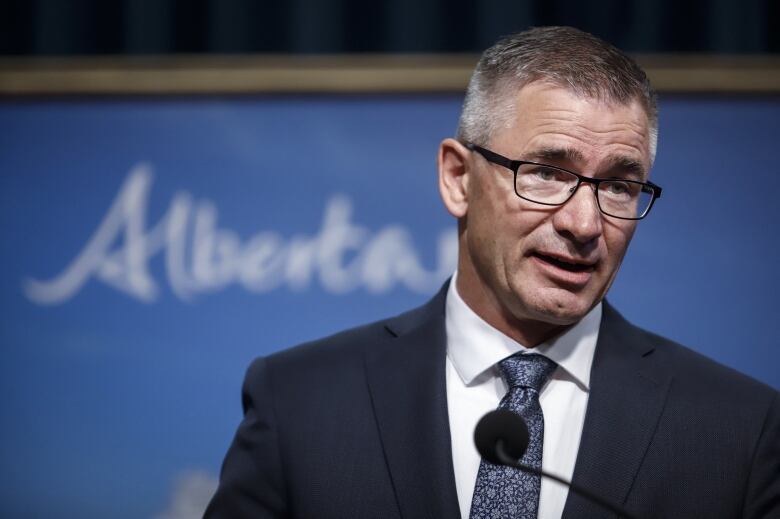Why Alberta's review of its energy watchdog is vital to get right and difficult to do
Industry woes, environmental concerns mean big change for the oil and gas regulator

These are strange days at the Alberta Energy Regulator.
Weeks after the provincial government removedits board and launched a review of the agency, threeinvestigations detailed gross mismanagement and a culture of fear inside the industry watchdog.
Then, the same week Finance Minister Travis Toews unveiled a provincial budget that includesreductions to theAER's ranks, the regulator announced itsthree executive vice-presidentswere no longer with the organization.
Change is definitely blowing through the halls of the regulator.
"We're doing a full review of the AER and its mandate, its governance structure and its operational practices," Energy Minister Sonya Savage told reporters ahead of the provincialbudget last month.
That's no small endeavour.
The AER is one of Alberta's most recognized public agencies. It oversees the massive energy sector and is expected to ensure the safe and environmentally responsible development of the industry.
If the province is going to shake up or refocus the organization, it may also want to askhow it can helprebuild confidence in the agency and, fundamentally, what kind of regulator Alberta needs.
These questions aren't easily answered, particularlynow.

The oil and gasindustry the biggest cog in theprovincialeconomycontinues tostruggleto regain itsfooting while it is under heightened scrutiny for itsenvironmental legacy and the effects of climate change.
Not that Alberta hasn't dealt with big challenges before.
The province's first regulator was created in 1938 amid fears that if industry was left unchecked, the race to get rich by drillingfastest could damageoil reservoirs and nip the sector in the bud.
Though they were not popular with everyone, rules were establishedwiththe public interest in mind.
The regulatorhas undergone several evolutions since then. The AER was created in 2013 with amandate to ensureorderly and efficient resource development, but safe and environmentally responsible, too.
The Progressive Conservative governmentsaid then itwouldstreamlineprocesses, savingmegaproject developers monthsof waiting for approvalswhile allowing Alberta to focus more effectively on itsenvironmental priorities.
In time, however, industry complained of slow approval times,while environmentalists brought attention to the growing andcostly legacy of aging energy infrastructurelike orphaned pipelines and oil wells.

Then three provincial probes into the AERfound its seniorleadership had shifted much of theirfocus toan international side projectcalled ICORE.
Its operation led to questions about the priorities and oversight of the AER as well as the treatment of staff, many of whom were worried speaking out would cost them their jobs.
It's the kind of scandal that could invite big change.
The government's vision includes a"leaner" regulator that more "efficiently manages industry investments," according to budget documents. It saystotal savings to industry are expected to be $147 million over four years.
The agencyisfunded through administrativelevies charged to industry.Itsays it has less than 1,160 full-time employees, though its numberswilldecrease further over the next few months. Budget documents show the number positions will drop to 970 this year.
But cutting resourcesis not where the review's focus should be, saysNikki Way,a senior analyst for the Pembina Institute, a clean-energy think-tank.
She said the AER had the right intentions when it was created with a mandate that includes environmentally responsible development. Whatthe government should review is where the AER directs its resources, she says.

"We've seen a lot of resources invested in two programs that speed up and accelerate timelines for the approvals of projects, which I think is not a bad thing," Waysaid.
"But if those savings don't go back to programs that deal with cumulative effects, with reducing [greenhouse gas]emissions, in dealing with other environmental concerns that are increasingly becoming problematic in Alberta, then the regulator has lost track of what it needs to do."
'A credible regulator is essential'
She is concerned a smallerbudget will mean the programs intended to fulfil the agency's environmental mandate will continue to be underfunded or even make the situationworse.
"A credible regulator is essential," Way said."If Albertans don't have confidence we have a regulator thatupholds the regulations we tout as world class, those regulations don't mean much in practice."
NeilMcCrank, chairman of one of theregulator's predecessors, theAlberta Energy and Utilities Board, from 1998 to 2007, believes there are fundamental issues the government shouldexamine.
McCranksaid the governmentshould decide whether the regulator is going to be truly independent. He said some provinces, like Saskatchewan,deal with regulatory matters inside government. But if Alberta wants the organization to run as an independent agency, it should ensure that it really is.
McCrankalso believes it may betime to evaluate the structure atop the organization, from the board to the C-suite. If the AER is going to keep aboard of directors, its responsibilities must be clear, he said. The auditor general's reportonICORE found the AER's boarddid not have all the skills to conduct proper oversight.
Finally, McCranksays there's a discussion to be had about how the AER is funded. For decades, its funding was sharedbetween the government andindustry, though the sector gradually ended up paying most of it. These daysit's funded solely by industry.
"Ithink ifthe government, on behalf of the people, ispaying half of the cost of the regulator and the industry is paying the other half, there seems to be a balance," McCrank said.

Canada's oilpatch has struggled to attract investment in recent years, while the U.S. has slashed taxes and red tapefor itssector. Some believe changes at the regulator could make Alberta more competitive.
Groups like the Canadian Association of Petroleum Producers (CAPP), with a membership that produces most of the country's oil and gas, sees a more focused and efficient regulator as something that could help the sector. Greater regulatory certainty, they say, will result in increased capital investment.
In a submission to the government last month,CAPPand other industry associations saidtimelines for application decisions can be lengthy and highly variable. Thatisa competitiveness risk for the sector, it says.
Theysaythe regulator needs to focus onkey roles, like making sound and timely development decisions.What itshouldn't do, in their opinion, is stray outside its mandate, likespending money onscientific studies where a direct linkto AER jurisdiction isn't clear.
"It's going to take some tough decisions and some strong focus,but at the end of the day, this is going to be critical tore-establishing and asserting Alberta competitiveness," said CAPP vice-presidentBen Brunnen.
"It's one of the key levers that the Alberta government has to strengthen the competitiveness of the industry."
Brian Fleck, an AER board member from 2017 until September, said the agency has taken steps to cut red tape and duplication in its approvalsprocesses, including the use of an online tool thatreduces paperwork. When the province unveiled the new approach last year, it said it should ultimately save the industry more than $600 million annually.
In his opinion, it's important the AER continue withthose efforts.
With the UCP government declaring that it wants Alberta to be one of North America's most attractive places to do business,one might expect aretooling of its energy regulator with that in mind.
Butmany peopleinand outside Albertawill also be watching to see the government's actions don't comeat the expense ofsafe and environmentally responsible development. That's still a part of the AER's mandate.
Alberta's regulator has faced challenges before, but this could be among its biggest yet.












_(720p).jpg)


 OFFICIAL HD MUSIC VIDEO.jpg)
.jpg)



























































































